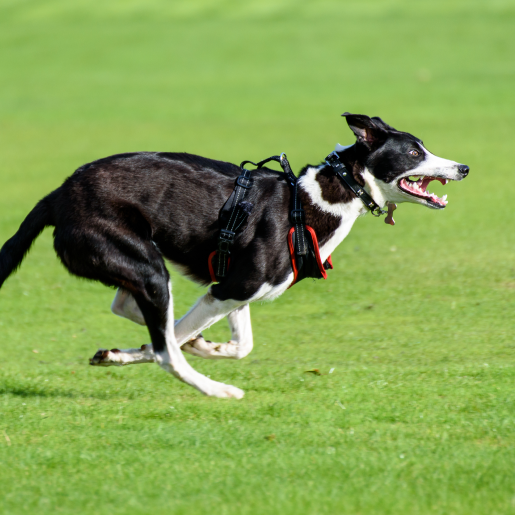other names: ANNPE, Type III disc herniation, high-velocity low-volume disc herniation
Overview
The intervertebral disc consists of two main parts: a tough outer ring called the annulus fibrosus, and a soft, gel-like center called the nucleus pulposus, which acts as a shock absorber during everyday movement.
In an Acute Non-Compressive Nucleus Pulposus Extrusion (ANNPE), a sudden rise in pressure often due to vigorous activity or trauma causes the inner gel-like material to burst through the outer ring. Instead of causing ongoing compression, the disc material rapidly dissipates or is reabsorbed. There is minimal to no continued compression of the spinal cord. However, as it forcefully strikes the spinal cord, it causes a contusive injury (bruising), which can result in neurological deficits, depending on the severity and location of the impact.
Clinical Signs
Acute Non-Compressive Nucleus Pulposus Extrusions have a very abrupt onset, typically during or shortly after vigorous activity such as running, playing, or jumping. Animals affected by ANNPE show acute signs of spinal cord injury, including sudden weakness, inability to walk or stand, or even complete paralysis. In many cases, the signs are asymmetric, meaning one side of the body is more severely affected than the other.
Despite how dramatic the symptoms may look, patients often do not seem to be in significant pain after the initial event.
Diagnosis
While the clinical history and symptoms may raise strong suspicion for ANNPE, a definitive diagnosis requires an MRI.
In dogs and cats with ANNPE, the MRI typically shows evidence of spinal cord swelling or bruising over the disc space, a change to the intervertebral disc showing that a small amount of inner material has been expelled, and dissipated with little to no disc material compressing the spinal cord.
Treatment
The focus of treatment is on supportive care while allowing the spinal cord to heal from the bruising. Decompressive surgery is not required as there is little to no disc material still compressing the spinal cord.
The patient will need a period of strict crate rest to give the spinal cord time to recover and to prevent further injury. During this time, movement should be limited to short, controlled bathroom breaks. Physical therapy or rehabilitation exercises can play a big role in recovery. These may include gentle stretching, assisted walking, and underwater treadmill therapy aimed at rebuilding strength and improving coordination.
Most animals with ANNPE are not painful after the initial injury, but some may need short-term pain relief or anti-inflammatory medications in the early stages to help with the bruising.
Prognosis
The prognosis for dogs and cats with ANNPE is generally good, especially when the neurological deficits are mild to moderate and your pet still has some movement and sensation in the affected limbs.
Many animals start to show improvement within the first one to two weeks, and steady progress is often seen over the course of several weeks to months with proper rest and rehabilitation. Many pets may have mild, lasting weakness or incoordination, often more noticeable on one side of the body, but nothing that significantly affects long-term quality of life.
In more serious cases such as when a pet is completely paralyzed and has no feeling of the affected limbs, the prognosis is more guarded. Recovery may take longer and require more intensive care. Some pets in these more severe categories can still make meaningful recoveries.
